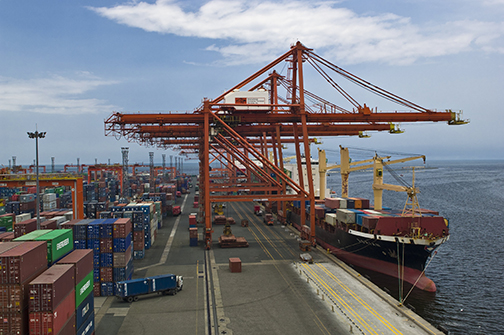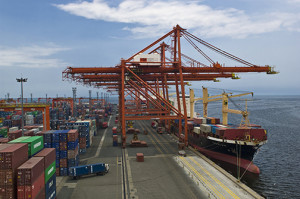

Stakeholders gathered at last week’s Manila Ports Forum called by the Cabinet Cluster on Port Congestion (CCPC) listened to a mix of old and new schemes to lick the problem of congestion at Manila ports.
One of the fresh suggestions that emerged was for container yard operators to stamp the equipment interchange receipt (EIR) of truckers who were diverted to another depot due to space unavailability.
This scheme can be implemented immediately, according to Carl Fontanilla and Eric Fulgencio, president and vice president of the Container Depot Alliance of the Philippines, respectively.
The stamp will serve as proof that the container was not delivered at the agreed time due to lack of space in the depot indicated in the EIR. This would then effectively exempt a cargo owner from paying the detention fee (charged against the container deposit paid by the cargo owner to a shipping line), explained Alberto Suansing, director of the Confederation of Truckers Association of the Philippines, during the forum’s Q&A.
It will also form the basis for the diversion fee charged to shipping lines by truckers, he explained.
Truckers said they have found it hard to show proof their trucks had been actually diverted. The problem of diversion from designated container yards grew worse after the massive port congestion triggered by the Manila daytime truck ban. With container yards full, it has been a normal occurrence for truckers to go around looking for depots with open space.
At the forum, container yard operators were also asked to operate 24/7 and rationalize their charges. How these would be adopted is uncertain since there is no government agency that regulates operation of container yards.
Revised MMDA truck route by December
Meanwhile, the Metropolitan Manila Development Authority (MMDA) will issue on December 1 a revised 24/7 truck trade route after it gets approval of the same from its traffic committee.
MMDA was also asked to issue a resolution extending the 24-hour express lane for the North and South routes with minor modifications.
The Department of Public Works and Highways was also requested to expedite construction of roads where trucks ply, especially C3. Public Works Secretary Rogelio Singson said the C3 project is problematic because only three of the 16 land owners to be affected by the improvements have agreed to the project.
Other forum recommendations, some of which have been previously suggested in various gatherings, include:
- Shipping lines should operate 24/7. During the Q&A, Patrick Ronas, president of the Association of International Shipping Lines (AISL), said some carriers earlier tried to offer a 24-hour service, but there were few takers.
- Shipping lines should start moving out empty containers. In the past few months shipping lines have already deployed sweepers to handle their empties. Ronas noted that shipping lines do not, as a rule, want to keep their empty containers in Manila. Moving containers out of their jurisdiction in 15 to 21 days or up to 30 days at most, is one of the shipping lines’ key performance indicators, Ronas said, but this has been difficult to meet given congestion at the ports.
An online system for the return of empty containers will also soon be pilot-tested, as previously reported by PortCalls. The AISL project, to be managed by Cargo Data Exchange Center, an accredited Bureau of Customs (BOC) value-added service provider, is expected to put some order to the chaotic system of empty container returns. - Shipping lines to submit a list of charges or rates being imposed.
- Shipping lines to unload cargoes not only at South Harbor and Manila International Container Terminal but also Batangas and Subic. Shipping lines were asked to specifically divert calls to South Harbor, where there have been no vessel queues for the last six weeks, according to Andrew Hoad, executive vice president of Asian Terminals Inc, operator of the Manila South Harbor, unlike at the Manila International Container Terminal, where lines of 20 vessels on average have been forming for weeks now. The decision as to which terminal shipping lines call, however, ultimately lies with cargo owners, AISL’s Ronas pointed out. Ronas said some liners are already returning to South Harbor, and he expects more carriers to do the same in the coming months.
- Stakeholders to report to the BOC any irregularities or abnormalities in Customs operations.
- Importers and exporters should exercise care in choosing their customs brokers.
- BOC to review and improve on its IT system procedures. (Even before the ports forum, Customs Commissioner John Sevilla had already announced the intention of the BOC to automate its processes.)
- The Department of Finance, Bureau of Internal Revenue (BIR), BOC and other concerned government agencies should meet on the importer and customs broker accreditation process. Port stakeholders said the complicated accreditation rules have added to the port congestion problem. Some said since they cannot process imports without provisional or regular accreditation from BIR and BOC, their cargoes are sitting idle inside the ports. CCPC head Secretary Rene Almendras said a new ruling addressing the situation will be issued by BIR in January 2015, but declined to give more details.
A technical working group will be called this week to discuss plans of action based on agreements arrived at in the forum. – Roumina Pablo




